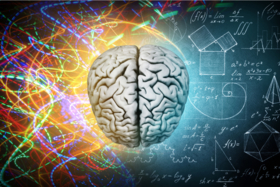Mnemonics - known methods for the development and training of memory

What is mnemonics? How to create science mnemonics? Imagine that you are a juggler who, in front of an amazed public, pulls out of an “empty” box with the colored handkerchiefs connected to one another. One handkerchief pulls the other along, and the next - and so on.
Imagined? Now you know how our brain works when it uses associative links. One image pulls another, and the other - the next ... This is how our associative memory works. And it is on this psychological pattern that the methods and principles of memorizing, which are called mnemonics, are based.
Psychophysiological basis of mnemonics. Different types of mnemonics and how to use it to remember
The human brain, operating on information, does it the same way, regardless of whether the image is real objects or fictional. This is a very important principle that allows us to use associations to memorize information.
Another important psychophysiological basis for memory is the associations in the brain themselves. They can be natural or artificially given by man himself. Such artificial connections are the basics of mnemonics.
Image, association and location - these three principles gave rise to popular and famous mnemotechnics.
Connecting them, you can memorize more and easier.
We think in pictures and sounds: vivid images.
Designing a bright, impressive image is the basis for successful memorizing! Usually, trying to memorize new terms or words in a foreign language or information from a textbook, we make two typical mistakes:
• do not even try to reproduce the acquired information in your brain;
• if we try, we use abstract logical connections, not images.
For example. It is necessary to memorize the Spanish “Yo voy”, not connecting it with the English translation and saying “yo boi- I go” several times, but walking, literally “living” this state of “I go” and imagining yourself walking in different situations. This is visual imagery mnemonics. Behind every foreign word or phrase, not their translation into your native language should stand, but the image that they mean.
If you “huele”, then breathe the air through your nostrils and smell. If you “ve la Tele”, then stare at the TV screen.
If you memorize scientific terms, then it is quite appropriate to use your figurative representation for memorizing. Ask yourself what they look like to you:
• tolerance;
• sensitivity;
• coherent series;
• turbulence?
For example, tolerance can be represented as a children's inflatable balloon filled with water and capable of obediently changing its shape in our hands.
Think up only pleasant images for you, because unpleasant ones our brain often blocks. Let it be images that awaken certain emotions in you, for example, surprise, smile, curiosity.
And, of course, do not forget about the humorous, funny images!
Chained: Associations
Associations will help you to connect the object of memorizing and the place where you need to remember this. For example, you need to ask the doctor who is treating your child if chocolate is possible for the child. Imagine a doctor's office where your conversation will take place, and mentally put chocolate on the table in front of the doctor. Your brain will remember your question as soon as your gaze falls to the doctor's desk.
You can create your own best associations:
• placing an object of memorizing at the very beginning of a row of other objects;
• connecting two objects together;
• imagining how these objects slowly, smoothly and simultaneously appear in your mind;
• introducing them dancing together or circling one after another;
• making them of the same color, or smell, or form, or causing the same emotions.
Make sure that the associative series you have created have volume, mark it up in a specific context and add dynamics.
An associative image is not necessarily a picture, but also
• sounds
• smells and aromas,
• touches,
• movement
• emotional states.
And all together they will help create a complete picture that will easily pop up in memory.
Lessons for Grandma: Location
Location as a technique gives us two advantages at once:
• sequence of reproduction of images,
• the connection between memorized objects and what we remember for sure.
Here is an example that journalists observed during an interview with 26-year-old Alex Mullen, the winner of the American mnemonist competition. To show them the techniques of common mnemotechnics, the memory of his grandmother seemed to him the most successful training ground. In the eyes of journalists, he invited his grandmother to remember 10 words:
1. cherry
2. coffee,
3. flowers,
4. sweets
5. scarecrow
6. dragon,
7. sauce,
8. ghost
9. cookies,
10. tablecloth.
Grandma flatly refused and categorically stated that she was not able to cope with such a task. Then he asked her to imagine herself in her home and mentally arrange all the words, moving in her living room from left to right. Something like this: “Put the cherry right in front of the front door, then put the flowers in a vase on the shelf, put candies on the sofa, put a scarecrow in the chair ... Imagined? And now again mentally go all this way again. ” As a result, his grandmother, unexpectedly for herself, recalled 8 words out of 10!
This is a useful technique when you need to remember a list of unrelated words, such as shopping or business for the day.
Train your memory, using mnemotechnics for kids and adults, for study and everyday life.











